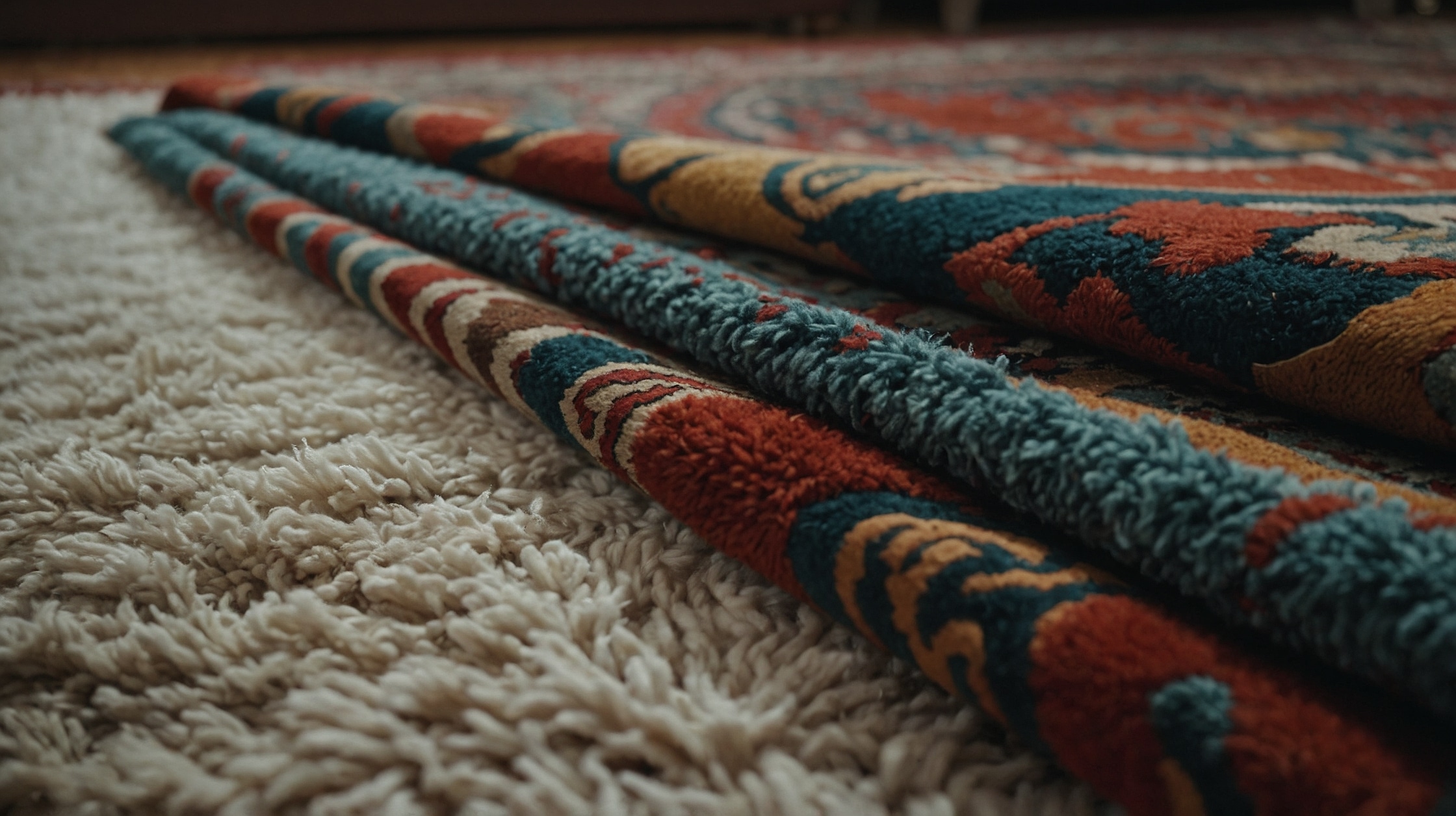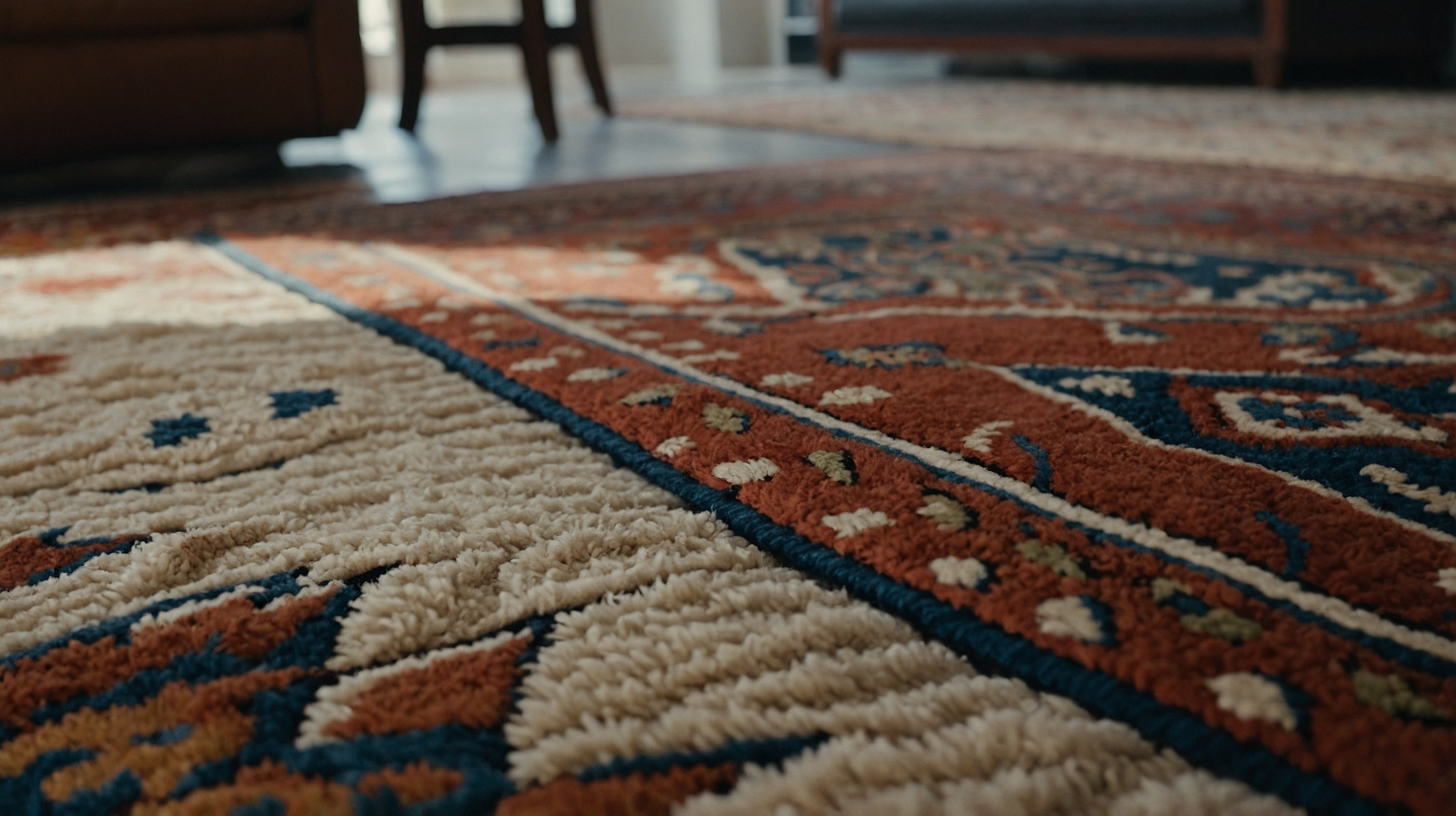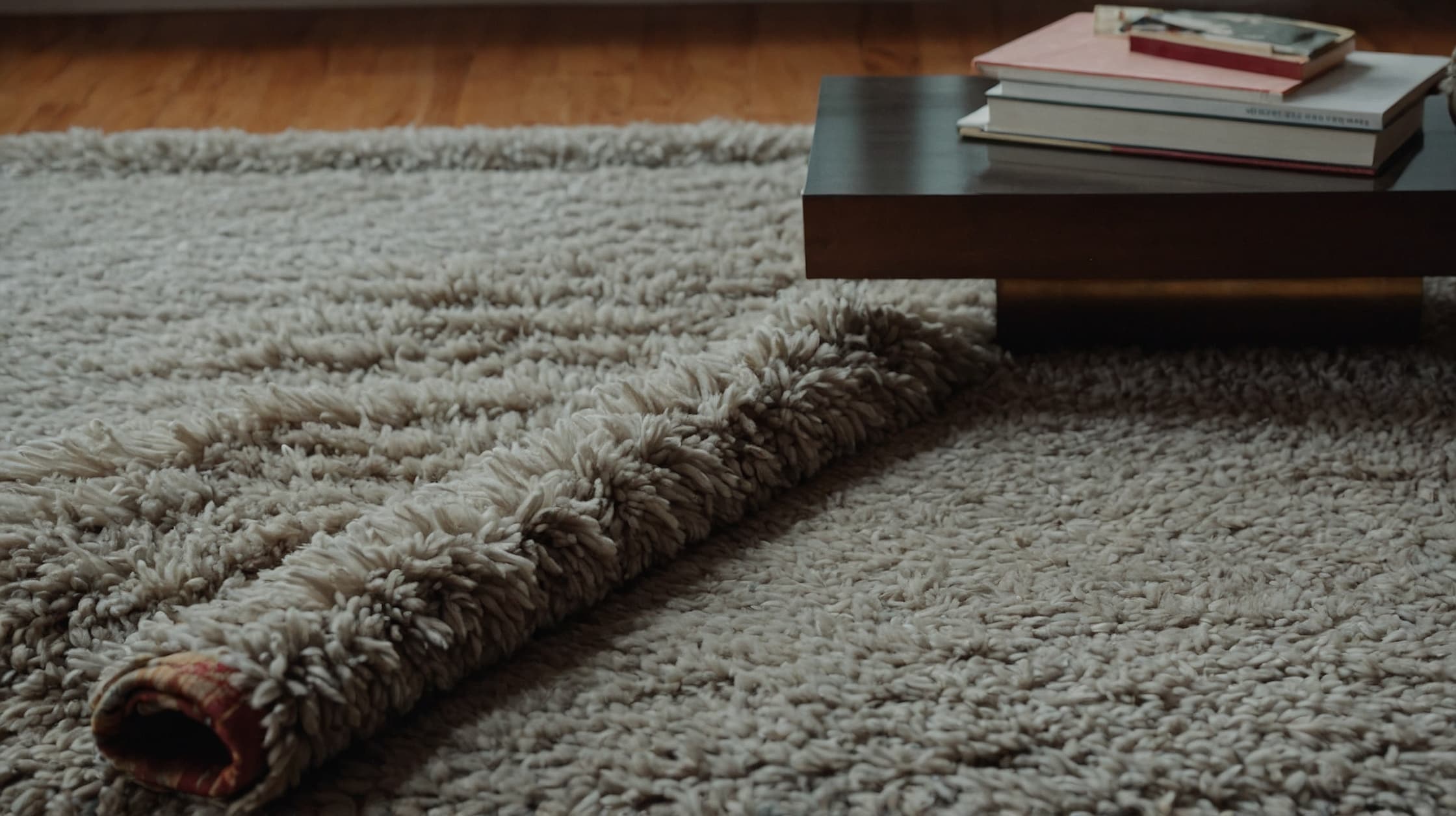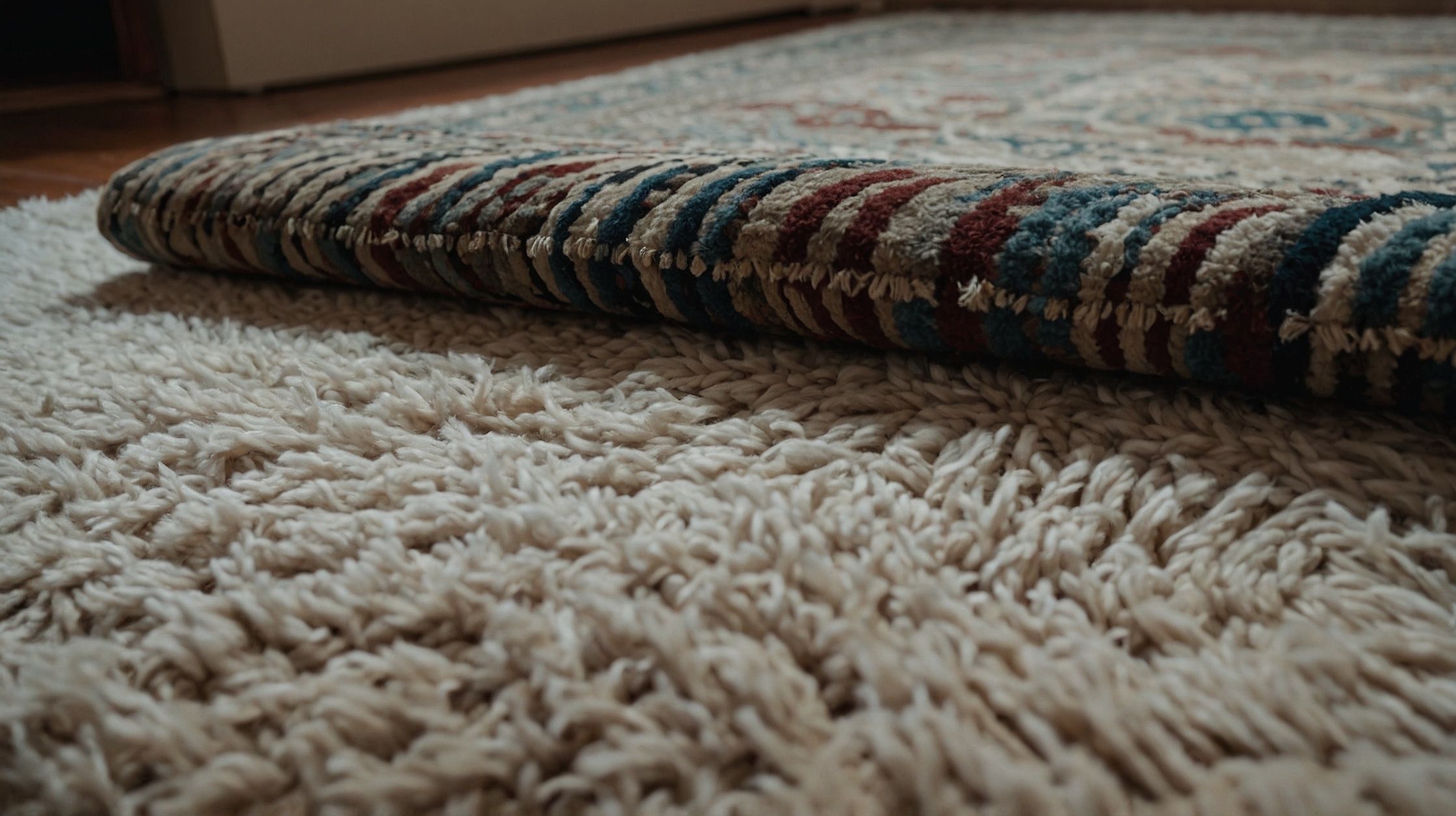Why a Rug is Important for Your Living Room
A rug plays a crucial role in a living room. It is not merely a decorative piece but a functional one as well. Many find that the right rug enhances the overall ambiance of the living space. It helps in unifying various design elements and creates a cohesive look.
A well-chosen rug adds warmth and comfort to the room. Whether the living room floor is hardwood, tile, or laminate, a good rug can make it feel much cozier. In colder months, warm living room rug offer an insulating layer that retains heat. This makes the space inviting and comfortable for both family and guests.
Moreover, a rug serves as a defining element in open-concept living areas. It can delineate different functionalities within a large space. For instance, it can clearly mark the seating area, setting it apart from dining or work zones. This practical function assists in creating a more organized and structured environment.
Next, a quality rug can improve acoustics. Hard surfaces like wood or tile can cause sound to bounce around, leading to an echo. Adding a rug helps absorb sound, making conversations clear and reducing background noise. This small change can significantly enhance the living room experience.
Not to forget, rugs offer safety benefits in homes with children and elderly individuals. Rugs provide traction, reducing the chances of slips and falls. This makes the room safer for everyone and gives peace of mind to homeowners.
Choosing the right rug also allows for personal expression through color, pattern, and texture. With countless designs available, it’s easy to find one that reflects your taste and complements your living room decor. From vibrant colors for a dramatic effect to neutral tones for a subtle touch, options are endless.
In summary, a living room rug is an essential component that brings together style, comfort, and functionality. It helps define spaces, improve acoustics, and increase safety, all while adding a personalized touch to your home. A well-thought-out selection can vastly enhance the overall atmosphere of the living room.
Adding Warmth and Comfort (warm living room rugs)

A well-chosen living room rug can add both warmth and comfort to any space. These elements are essential for creating an inviting atmosphere. Adding a soft, plush rug can immediately make a room feel cozier. Especially in colder months, warm living room rug provide an extra layer of insulation. This helps retain heat and makes the space more comfortable.
Materials like wool are popular choices for warm rugs. They are naturally insulating and incredibly soft. Wool rugs can keep feet warm, making them ideal for chilly floors. Similarly, shag rugs with a high pile offer a lush feel underfoot. They invite people to settle in and relax, enhancing the room’s overall comfort level.
Color also plays a significant role in adding warmth. Warm shades like reds, oranges, and browns can make a living room feel snugger. These colors can evoke a sense of warmth, especially when combined with soft textures. Earthy tones in a rug can complement natural wooden furniture, creating a cohesive and cozy ambiance.
Adding a rug doesn’t just bring physical warmth; it also adds emotional comfort. Patterns and textures can evoke feelings of nostalgia or tranquility. A well-textured rug can provide sensory comfort, encouraging relaxation. Something as simple as a soft rug can make people feel more at home.
Underfoot comfort is another key factor. A cushioned pad underneath the rug increases softness and support. It also prolongs the life of the rug, making it an investment that pays off in the long run. Underpadding can make a noticeable difference in how cozy the living room feels.
In households with children, a warm rug provides an excellent area for play. Kids can sit, lie down, or play on the floor more comfortably. This turns the living room into a versatile space for family activities.
In summary, adding a warm living room rug aids in creating an inviting, comfortable atmosphere. The right choice of material, color, and texture significantly impacts the room’s overall comfort. Whether it’s through physical warmth or emotional comfort, a well-chosen rug can transform the living room into a cozy retreat.
Defining Your Space
A living room rug can define and anchor the space, giving it structure and focus. When strategically placed, a rug outlines the boundaries of a living area. This is particularly useful in open-concept homes or larger rooms. For example, placing a rug under the main seating area can clearly delineate the socializing zone from other parts of the room.
A rug also helps to unite various pieces of furniture. It creates a cohesive arrangement by linking chairs, sofas, and tables within its boundaries. This visual unity can make the room feel more organized and intentional.
In small spaces, a well-chosen rug can make the area appear larger. Light-colored rugs with minimal patterns tend to open up a room, giving it an airy feel. On the other hand, a dark or heavily patterned rug can add depth and richness, making a large room feel cozier and more intimate.
The way colors and patterns on a rug interact with the existing decor is crucial. A boldly patterned rug can serve as a statement piece, injecting personality into a room. It can break up an otherwise monotonous design with vibrant hues and intricate designs. Conversely, a neutral rug provides a subdued backdrop that allows other design elements to shine.
When it comes to layout, rugs can either follow the room’s geometry or contrast with it. An angular rug might echo the lines of modern furniture, reinforcing a sleek aesthetic. Meanwhile, a round rug can soften a space dominated by straight lines and sharp corners.
Texture plays a role in how a rug defines space as well. A thick, luxurious rug signals a cozy, personal area ideal for relaxation. In contrast, a flat-weave rug suggests functionality and minimalism, making it suitable for high-traffic areas.
Rugs also have the practical benefit of sound absorption. They reduce noise by dampening footsteps and echoing sounds. This contributes to a calmer, more serene environment.
A rug can define pathways within a living room as well. For instance, in a long, narrow space, placing a runner rug along the length of the room directs movement seamlessly.
Ultimately, using living room rugs to define space helps set the tone and purpose of the area. Whether aiming for coziness, elegance, or simplicity, a well-placed rug lays the foundation for balanced design.
Choosing the Right Size for Your Living Room Rug

Measuring Your Space
Before purchasing, it’s crucial to measure the living space accurately. Grab a tape measure and determine the length and width of the room. Identify the specific area where you plan to place the rug. This step helps to avoid buying a rug that’s too large or too small for the intended space.
When measuring, consider furniture placement. Ensure that key pieces like sofas and coffee tables fit comfortably on or around the rug. This ensures a harmonious look without overcrowding or imbalance.
Another approach is to use painter’s tape to mark out the potential rug area on the floor. This visual aid gives a better sense of how different sizes will appear in your living room. It also allows you to experiment with various dimensions before making a final decision.
Common Sizes and Shapes
Living room rug come in standard sizes that cater to various layout needs. The most popular dimensions include 5×8 feet, 8×10 feet, and 9×12 feet. A 5×8 rug is ideal for small seating areas. It works perfectly for placing under a coffee table with the front legs of surrounding furniture grazing its edges.
An 8×10 rug typically suits medium-sized living rooms. This size allows all furniture legs to rest on the rug, creating a unified area. It works best when you want more floor coverage and a cohesive look.
For larger spaces, a 9×12 rug offers ample coverage. It envelops all key furniture pieces, maintaining balance in spacious living rooms. This size scale often sets a grand and luxurious tone.
Beyond standard sizes, rugs come in various shapes — rectangular, square, and circular. Rectangular rugs are versatile and fit most setups well. Square rugs can define compact seating spaces or play areas effectively. Circular rugs soften angular lines and work well under round tables or as standalone design statements.
Choosing the correct size also involves considering foot traffic patterns. Ensure that there’s enough space around the rug for easy movement without tripping over edges.
Ultimately, selecting the right size for your living room rug involves careful planning. It ensures a balanced and inviting environment that enhances overall design aesthetics.
Measuring Your Space
Before buying a living room rug, measuring the space is critical. Using a tape measure, get the room’s length and width. Consider the specific area where the rug will go. Knowing these dimensions prevents purchasing a rug that is too large or small.
Furniture placement also plays a key role. Ensure sofas and coffee tables fit well within or around the rug area. This creates a balanced look and avoids overcrowding. It’s important to place key furniture pieces so their front legs rest on the rug’s edges. This setup ties the room together visually.
Using painter’s tape can offer a helpful visual guide. Mark out potential rug dimensions on the floor with the tape. This step provides a clearer picture of how different sizes will fit in the space. Adjusting the tape allows for experimenting with layout options before making a final decision.
Traffic patterns must be considered, too. Leave enough space around the rug for easy movement. A rug placed in high-traffic areas should not create tripping hazards. Addressing this ensures both safety and convenience.
Measuring doesn’t only involve length and width. The room’s shape influences the rug’s best fit, as well. Factor in features like fireplaces or built-in shelving. These elements may restrict where a rug can be placed effectively.
Another useful tip is considering rug overlap. Slightly larger rugs can extend beyond furniture, contributing to a spacious feel. Avoid clutter by balancing rug coverage with visible flooring. This method prevents overwhelming the room’s design.
Overall, the correct measurements result in a well-suited living room rug that enhances comfort and aesthetics. Accurate measurements ensure functionality without dominating the space, leading to an inviting atmosphere.
Online tools and apps available can assist in determining the rug size, factoring in your furniture layout. These digital solutions simplify decision-making by providing visual representations.
Ultimately, careful measuring leads to better-informed purchases. It guarantees that the chosen rug complements both spatial and functional requirements of the living room, ensuring long-term satisfaction with the investment. Proper planning transforms any living space into a harmonious setting, benefiting both style and comfort.
Common Sizes and Shapes
When selecting a living room rug, it’s crucial to understand the common sizes and shapes available. The most popular rug sizes include 5×8 feet, 8×10 feet, and 9×12 feet. Each size serves different purposes and fits various room dimensions.
5×8 feet rugs typically work well in smaller living rooms. They create a cozy area, often used to anchor a coffee table and a couple of chairs. This size highlights specific areas without overwhelming the space.
For mid-sized rooms, 8×10 feet rugs are a versatile choice. They provide ample coverage, easily accommodating standard sofa and chair arrangements. This size allows all furniture’s front legs to rest on the rug, creating a unified appearance.
Rooms with more extensive floor plans benefit from 9×12 feet rugs. These rugs cover larger areas, making them suitable for open floor plans or seating areas with multiple furniture pieces. This size ensures significant portions of the furniture sit on the rug, providing a cohesive look.
Living room rug shapes also play a significant role in achieving the desired aesthetic. Rectangular rugs are the most common shape, offering a classic and versatile option for most room layouts. They fit well under sofas, coffee tables, and other living room furniture, creating a balanced arrangement.
For those seeking something different, round rugs can add visual interest. Round rugs work well in smaller seating areas or under circular coffee tables. They soften the room’s look, breaking the monotony of straight lines and adding a unique touch.
Square rugs are another alternative, though less common. They fit neatly into square-shaped spaces and can help define separate areas within an open floor plan. Square rugs create a sense of symmetry and organization.
Runners are narrow and long, perfect for pathways or smaller sections of the living room. They guide traffic flow and add warmth to otherwise overlooked spaces.
In summary, choosing the right size and shape for a living room rug involves understanding your room’s dimensions and furniture layout. Whether opting for rectangular, round, square, or runner rugs, each option provides distinct advantages tailored to different living room needs. Carefully considering these factors ensures a functional and visually appealing choice that ties the room together seamlessly.
Popular Materials for Living Room Rugs
When choosing a living room rug, the material is essential. It affects the rug’s durability, feel, and look. Various materials offer distinct benefits. Understanding the options helps in making an informed decision.
Natural fibers are a popular choice for living room rugs. Wool is widely used for its softness and resilience. It provides comfort underfoot and retains its appearance over time. Wool rugs are also good at resisting stains and repelling dust mites, making them suitable for people with allergies.
Cotton is another natural option. It’s lightweight and easy to clean. Cotton rugs are often less expensive than wool, making them a budget-friendly choice. However, they may not be as durable and could wear out quicker in high-traffic areas.
Jute and sisal are natural fibers that offer a more rustic look. These materials are strong and durable, perfect for busy spaces. They add a natural texture to the room, creating a cozy atmosphere. However, they can be rough to walk on and aren’t ideal for areas where people sit or play on the floor.
Synthetic materials are another category to consider. Polypropylene is one of the most common synthetic fibers for rugs. It’s stain-resistant and easy to clean, making it suitable for families with children or pets. Polypropylene also mimics the look of natural fibers at a lower cost, but it may not feel as luxurious.
Polyester is another synthetic option. It’s known for its vibrant colors and resistance to fading. Polyester rugs can be plush and soft, adding comfort to the living room. However, they can be prone to shedding and may not hold up as well in high-traffic areas.
Nylon rugs are durable and resilient. They’re great for high-traffic areas since they resist wear and tear. Nylon also offers a range of design options due to its ability to hold color well. However, some may find nylon less comfortable underfoot compared to other materials.
Choosing the right material for a living room rug depends on various factors like traffic, budget, and desired comfort level. Natural fibers offer classic appeal and durability, while synthetic options provide affordability and ease of maintenance. Each material brings unique benefits, ensuring there’s a perfect match for every living room.
Natural Fibers
Natural fibers are a popular choice for living room rugs. These materials offer various advantages, providing both durability and style. Wool is one of the most common natural fibers used in rugs. It is known for its softness and warmth. Wool rugs are resilient and can withstand heavy foot traffic. This makes them ideal for busy households.
Wool also has natural stain resistance. It has a protective layer that repels liquids and dirt, making it easier to maintain. Another benefit of wool is its hypoallergenic properties. It repels dust mites, which helps improve indoor air quality.
Cotton is another natural fiber often used for living room rugs. It is lightweight and easy to clean. Cotton rugs tend to be more affordable than wool rugs, making them a budget-friendly option. They come in various colors and patterns, adding versatility to any living room decor. However, cotton may not be as durable as wool and could wear out faster in high-traffic areas.
Jute and sisal are other natural fibers that bring a rustic charm to living room settings. These materials are strong and durable. They can handle heavy use without showing signs of wear and tear quickly. Jute and sisal rugs add a natural texture to the living room, creating a cozy atmosphere. However, these materials can be rough to the touch. They may not be comfortable for sitting or playing on the floor.
Seagrass is another natural fiber worth mentioning. It is highly durable and resistant to stains. Seagrass rugs have a unique texture and earthy tones that complement various decor styles. However, they can be slippery on hardwood floors, so using a rug pad underneath is recommended.
In summary, natural fibers offer a range of benefits for living room rugs. Wool provides warmth and durability, while cotton offers affordability and ease of care. Jute, sisal, and seagrass add natural texture but may lack comfort for sitting or playing. Choosing the right natural fiber depends on individual needs and preferences, ensuring a perfect match for any living room setting.
Synthetic Options
Synthetic fibers are a practical choice for living room rugs. They offer several benefits, including affordability and durability. One of the most popular synthetic materials is polypropylene. This fiber is known for its resilience and resistance to stains. It is also fade-resistant, making it suitable for rooms with high sun exposure. Polypropylene rugs are easy to clean, requiring minimal maintenance. A simple vacuum or occasional spot clean keeps them looking fresh.
Polyester is another common synthetic option. It boasts vibrant colors and patterns, which do not fade easily. Polyester rugs are soft to the touch, providing comfort underfoot. They are also resistant to mildew and moisture, making them ideal for humid environments. However, they may not be as durable as polypropylene and can show signs of wear if placed in high-traffic areas.
Nylon is a synthetic fiber known for its strength and durability. It is highly resilient and can recover from heavy foot traffic quickly. Nylon rugs are resistant to dirt and stains, making them easy to maintain. They are also known for their comfortable texture and vibrant colors. However, nylon can be more expensive compared to other synthetic options, but the investment is often worth it due to its longevity.
Acrylic fiber mimics the look and feel of wool at a fraction of the cost. Acrylic rugs are soft, warm, and comfortable. They are also resistant to static electricity, which can be an advantage in dry climates. However, acrylic fibers can pill over time, affecting the rug’s appearance.
Each synthetic fiber offers unique benefits that cater to different household needs. From the affordability of polypropylene to the durability of nylon, there is an option for every budget and lifestyle. While synthetic rugs may not offer the natural charm of wool or cotton, they provide practical solutions for busy households.
In conclusion, synthetic options provide practical and budget-friendly choices for living room rugs. Each material offers specific benefits that can cater to various needs and preferences. Whether prioritizing affordability, durability, or ease of maintenance, a suitable synthetic rug option exists for every living room setting.
Styling Tips for Living Room Rugs
Matching with Furniture
When selecting a living room rug, it’s essential to think about how it complements the furniture. Neutral-colored rugs pair well with bold and vibrant furniture, creating a balanced look. Conversely, if the living room furniture features neutral tones, a colorful or patterned rug can introduce visual interest. Consider the texture of the rug as well; a shaggy rug pairs well with sleek, modern furniture, adding warmth and contrast.
Avoid using too many patterns in one space. If the upholstery on your furniture is already patterned, opt for a plain or subtly textured rug. This approach ensures that the room does not appear too busy. Matching the colors of the rug with accent pieces like throw pillows or artwork helps tie the room together. Proper alignment of the rug with furniture also enhances the room’s flow. For example, in a seating area, position the front legs of sofas and chairs on the rug to anchor the space.
Creating a Focal Point
A living room rug can serve as a striking focal point, drawing immediate attention when entering the room. Choose a bold design or vibrant color to make the rug the centerpiece. Place it centrally under a coffee table or in an open space to maximize its impact. Rugs with unique patterns or textures, such as geometric designs or intricate weaves, add depth and dimension to the room.
In rooms with minimal decor, an ornate or colorful rug can stand out without overwhelming the space. Layering rugs is another stylish option that adds texture and interest. Place a smaller patterned rug over a larger neutral one to create depth and visual intrigue. This technique works especially well in large living rooms, breaking up expansive floor areas and adding coziness.
Lighting also plays a crucial role in highlighting your rug. Ensure the space is well-lit so that the colors and patterns of the rug are visible even during evening hours. Floor lamps and strategically positioned overhead lights can help achieve this effect. Lastly, rotating the rug periodically ensures even wear and keeps the focal point fresh.
By considering these styling tips, you can create a cohesive and attractive living room that reflects your personal style while maintaining functionality.
Matching with Furniture
When choosing a living room rug, it’s essential to think about how it complements the furniture. A neutral-colored rug can balance bold and vibrant furniture, creating a cohesive look. Conversely, if the furniture features neutral tones, a colorful or patterned rug adds visual interest.
The texture of the rug should also be considered. A shaggy rug pairs well with sleek, modern furniture, adding warmth and contrast. It’s advisable to avoid using too many patterns in one space. If the upholstery on the furniture is already patterned, opting for a plain or subtly textured rug keeps the room from appearing too busy.
Matching the rug’s colors with accent pieces like throw pillows or artwork ties the room together. Proper alignment enhances the room’s flow. For example, positioning the front legs of sofas and chairs on the rug anchors the space effectively.
It’s crucial to ensure that the rug’s size complements the seating area. A too-small rug can make the room feel disjointed. Similarly, a too-large rug might overwhelm the space. Striking a balance is key to achieving a harmonious look.
The rug can also serve as a backdrop for furniture arrangement. For instance, using a large area rug under all primary pieces helps define the living room zone, especially in open-plan spaces. This technique adds structure and delineates areas without the need for physical partitions.
Layering different textures and patterns can elevate a room’s design. Placing a smaller patterned rug over a larger neutral one introduces depth and visual intrigue. This approach works well in large living rooms, breaking up expansive floor areas.
Lighting plays a pivotal role in showcasing the rug’s beauty. Ensuring that the space is well-lit allows the colors and patterns of the rug to stand out. Strategically positioned floor lamps and overhead lights can achieve this effect, enhancing the room’s ambiance.
Finally, regularly rotating the rug prevents uneven wear and keeps its appearance fresh. By considering these styling tips, one can create a cohesive and attractive living room that reflects personal style while maintaining functionality.

Creating a Focal Point
A living room rug can serve as a striking focal point. It draws the eye and sets the tone for the rest of the room. Choosing a rug with bold patterns or vibrant colors instantly grabs attention. This approach works well in minimalist spaces, breaking monotony and adding excitement.
Size matters when creating a focal point. A rug that’s proportionate to the room ensures balance. Too small, and it loses its impact. Too large, and it dominates the space. The right size anchors the room, creating a harmonious look.
Patterns play a crucial role. Geometric designs are modern and trendy, while floral patterns evoke a classic feel. Abstract designs bring an artistic touch. Select a style that resonates with the room’s overall theme.
Contrasting colors can make the rug stand out. If the room’s palette is mostly neutral, a brightly colored rug adds vibrancy. Conversely, in a colorful room, a neutral rug can be the calm center. The contrast should appeal, not clash.
The placement of the rug affects its role as a focal point. Center it in the main seating area to naturally draw attention. In open-plan spaces, use the rug to define a specific zone, like the seating or entertainment area.
Furniture arrangement impacts the rug’s visual prominence. Place key pieces, such as a coffee table, strategically on the rug. This tactic ensures that the eye is drawn towards the center of activity in the room.
Textures enhance visual interest. A high-pile or shaggy rug introduces a tactile element. People notice not only how it looks but also how it feels underfoot. This multi-sensory appeal makes the rug more engaging.
Lighting is another critical factor. Ensure that natural or artificial light highlights the rug. Well-lit rugs showcase their patterns and colors better. Consider using floor lamps or accent lighting to enhance visibility.
Regular maintenance keeps the rug looking its best. Clean and care for it to retain its attractiveness. A well-maintained rug continues to be an appealing focal point over time.
Incorporating these strategies helps create a living room that is both stylish and inviting. Using a rug as a focal point pulls the design together beautifully.


